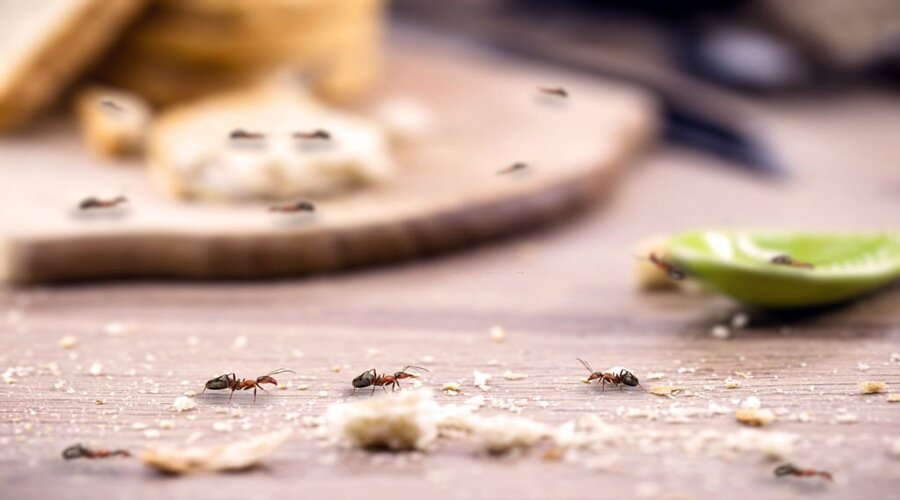Top 10 Common Pests in Australia
A Guide to Household Pests in Australia
Dealing with pests can be a real pain. Some creepy crawlers and uninvited guests like to make themselves comfortable in our homes without paying rent! But it’s important to know what you might be up against so you can take action to get rid of them.
Eco Pest Control Adelaide is here to share the top 10 most common household pests here in Australia.
We will give you some facts about each one, signs to look out for, and tips on how to treat an infestation.
What Exactly is a Household Pest?
It is any insect or animal that has accidentally or deliberately made its way into your home. They can have a wide range, from being a mere nuisance to causing serious damage.
Pests gain access through small cracks and crevices and if left unchecked can multiply rapidly. They pose health risks through contamination as well as stings. Some even spread harmful diseases. So it’s vital to identify and control any infestations before they get out of hand.
Right, now let’s look at the top 10 offenders:
1. Termites
You’ve probably heard of these hungry wreckers! Termite feed on cellulose material, which includes cardboard, paper, decaying plant matter, and fabric in your home, making them the perfect source.
There are different types of termites in Australia but the most destructive are subterranean termites. They burrow tunnels underground to move between their nest and food source. You may not even realise you have it until the damage is already done.
Signs of termites:
- Mud tunnels visible on foundations or trees
- Hollowed out wood
- Swarming winged insects inside the house
- Wood that sounds hollow when tapped
Treatment involves either chemical spraying, termite baiting systems or physical barriers. If you spot signs of termites, call a pest control services immediately to prevent severe damage.
2. Cockroaches
The creepy crawly cockroach loves to set up camp in our homes. These nocturnal omnivores will eat just about anything from waste to books and magazines!
There are numerous types of cockroach species in Australia, but German and American cockroaches are most prevalent. They reproduce rapidly and can be tricky to get rid of.
Signs of cockroaches:
- Sightings of roaches, especially at night
- Egg cases and droppings
- Odour from secretions
- Grease marks along their travel paths
Prevention and sanitation are key. Eliminate sources, caulk cracks and crevices and use cockroach pest control chemicals. Consider calling an exterminator for severe invasions.
3. Spiders
Australia is home to a number of spiders that occasionally find their way indoors. Some of the most common house spiders include the daddy long legs, black spider and the notorious red back spider.
Most spiders are harmless but some can deliver nasty stings so it’s best not to take any chances.
Signs of spider infestation:
- Webbing in corners or windows
- Small egg sacs
- Spotting the spiders themselves!
Seal any crevices where they may enter. Use a vacuum on webs and a broom to remove egg sacs. Insecticide sprays can help manage populations. Seek medical help immediately if bitten by a suspected dangerous spider.
4. Ants
Ants are persistent little insects that can sneak into even the cleanest homes in search of food. Some of the common ant species in Australian households are sugar ants, black ants and coastal brown ants.
Ants create colonies with multiple queens, making their elimination challenging. Key to ant control is getting rid of indoor sources and addressing spills.
Signs of an ant infestation:
- Long trails of ants along the floors or countertops
- Nesting sites hidden in gardens, cracks and voids
- Winged ants swarming around in summer
Use ant traps, dusts or sprays in problem areas and seal entry points. Maintain strict sanitation in kitchens. For huge infestations, seek professional pest control assistance.
5. Fleas
These tiny pests love to feast on human blood and pets. Cat and dog fleas often hitch a ride indoors on your pet. They can cause itchy and skin irritation.
Fleas breed rapidly, so just a few can lead to a full-blown proliferation. Eggs and larvae live in carpets, bedding, and pet resting areas.
Signs of fleas:
- Itchy red marks on the skin
- Flea dirt that looks like black pepper
- Catching adult fleas jumping onto white socks
Treat all pets simultaneously with vet recommended flea control products. Wash bedding on hot cycle, vacuum thoroughly and consider foggers for heavy flea presence.
6. Bed Bugs
Bed bugs are sneaky blood-sucking parasites that come out at night. During the day, they hide out in mattresses, furniture and even curtains.
It can result in itchy welts, but many people have no reaction at all, making them tough to detect. Bed bugs spread easily from place to place by latching onto clothing and bags.
Signs of bed bugs:
- Raised, itchy red lines or clusters
- Dark spotting and staining on bed sheets
- A sweet, musty odour
- Seeing live bed bugs in seams of mattresses and furniture
Isolate and inspect beds carefully for signs of infestation. Use steam, excessive heat, or freezing temperatures to eradicate them. Seal cracks, vacuum thoroughly, and apply silica dust. Professional management is recommended for significant infiltrations.
7. Rodents
Rodents like rats and mice can find their way into homes through the tiniest of holes. They contaminate food, spread sickness and can cause considerable damage by chewing on wires.
Field mice and roof rats are common unwanted guests. Keep an eye out for signs of their presence.
Signs of rodent infestation:
- Droppings around storage areas
- Chew marks or holes along baseboards
- Nesting materials found in cupboards and attics
- Noises like scampering or gnawing in the ceilings
Seal all possible entry points with weather-resistant sealant. Traps work well for small infiltrations. For significant rat issues, contact pest control for help.
8. Wasps, Hornets and Bees
Stinging insects like wasps, hornets and bees can create nesting sites in places like attics, crawl spaces, bushes and trees nearby your home. Some may find their way inside.
They will sting to defend their nest which can be a medical emergency for those allergic. Having them around poses a safety risk.
Signs of stinging insects:
- Buzzing or hum of wings heard from inside
- Mud nests attached under eaves or ceilings
- Seeing the insects flying in and out
- Getting stung by one!
Call a professional to remove large hives. Otherwise, vacuum nests at night and use sprays or dust insecticide. Make sure hornets, bees, and wasp nests are abandoned before removing them to avoid being stung.
9. Flies
Filthy flies make their way inside our homes to feast on food remains and other decaying, organic matter. The most common nuisance flies are blow flies and house flies.
Flies spread germs and illnesses when they land on food meant for human consumption. The presence of fly problems is generally a sign of uncleanliness or improper waste disposal, as these conditions provide a breeding ground for them.
Signs of a fly issue:
- Seeing flies buzzing around indoors
- Noticing bunches of flies on windows and surfaces
- Small fly specks on walls and floors
- Flies circling drains or trash cans
Install proper screens on doors and windows. Use fly traps and swatters. Clean kitchen drains and trash cans thoroughly. Keep outdoor bins covered and practice good sanitation.
10. Mosquitoes
Mosquitoes might be more of an outdoor pest, but they occasionally find ways to get inside. These insects can transmit diseases like Ross River virus, Barmah Forest virus and Dengue fever.
Mosquitoes lay eggs in standing water sources and need the blood to produce eggs. Just one sneaky mosquito can cause multiple indoor bites.
Signs of mosquitoes:
- Hearing the whining buzz of mosquitoes
- Itchy, red bumps or welts from mosquito bites
- Spotting mosquitoes flying or resting on walls
Install secure screens on windows and doors. Remove any stagnant water from the premises. Use plug-in repellents, bed nets or high frequency devices.
Alright, we’ve covered the main pests you’ll encounter at home here in Australia. Being able to identify them and knowing how to handle them is key to protecting your family and property.
FAQ’s
How can I prevent pests from getting in my home?
Practicing good sanitation, sealing entry points, installing screens, inspecting items before bringing indoors, and maintaining a tidy exterior space helps keep pests out.
What are signs of a serious infestation I cannot handle myself?
Large amounts of droppings, numerous nests/webs, heavy odours, seeing large numbers of pests, and unmanageable biting/stinging.
What should I do if I get bitten or stung?
Clean the bite area thoroughly. Use ice packs and anti-itch creams for relief. Seek medical help if severe swelling, numbness, headache or other concerning symptoms develop.
Can pets carry pests into the home?
Yes, pets can carry fleas, ticks, mites, and internal parasites. Use veterinarian-recommended care products on your pets and keep them well-groomed.
How often should I inspect the house for pests?
Monthly inspections inside and outside the home helps you catch issues early before they multiply and spread. Check all rooms carefully.
Conclusion
Dealing with pests requires vigilance and persistence. Identifying them quickly and taking appropriate control measures gives you the best chance of getting rid of them. If infestations get out of hand, don’t hesitate to call professionals.
Prevention is truly key when it comes to pests. With good sanitation habits, maintenance, and monitoring of your home, you can help keep these annoying invaders away and have a healthy home environment!



